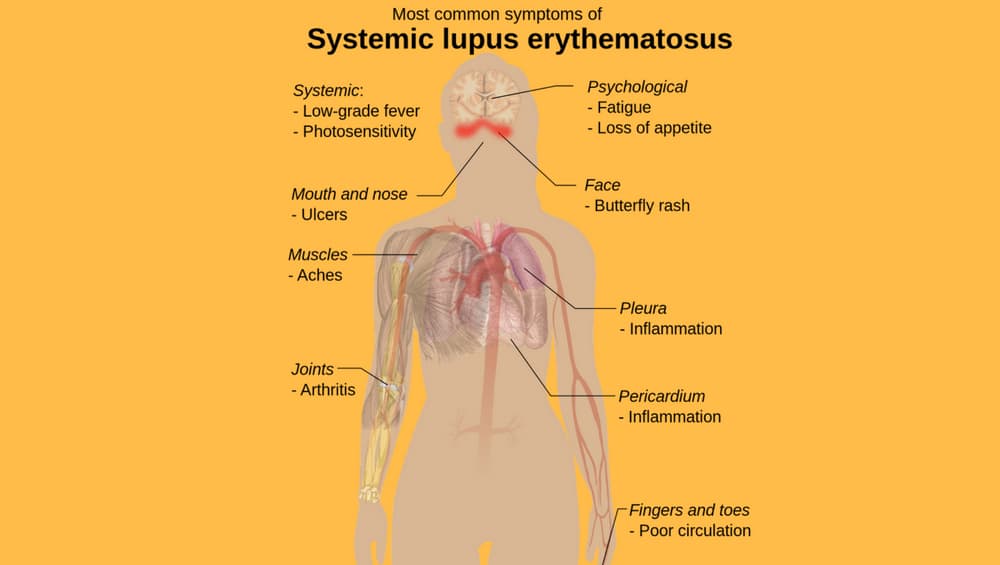Somewhere in 2015, singer Selena Gomez’s waning health was making news the world over. It was later revealed that the pop sensation was suffering from an inflammatory autoimmune disease called lupus. At various fora, she opened up about her long-drawn battle with the chronic disease, which eventually affected her renal health. Selena again made news in 2017, when she announced on Instagram that she received a kidney from her friend Francia Raísa.

Although many celebs like Toni Braxton, Nick Cannon and most notably singer Seal have suffered from lupus, it was Selena’s public struggle with the condition that helped focus attention on this chronic autoimmune disease and help the cause of lupus sufferers worldwide.
What is Lupus?
The word lupus in Latin literally means wolf. The words lupine, meaning wolf-like, is derived from the same word. The characteristic butterfly-shaped rash resembled the bite marks made by a wolf. It’s a chronic autoimmune condition where the immune system launches an attack against the skin, muscle and bone, blood, heart, lungs and kidneys of the affected person. Since it presents so many symptoms, it is sometimes difficult to conclusively detect the illness.
What Causes Lupus?
Since the lupus is an autoimmune disease, not much is known about its causes. It’s widely believed that hormones, namely oestrogen, has a role to play since lupus is seen more in women of the child-bearing age. A genetic predisposition also increases the risk of the disease. A 2014 study also found links between lupus and vitamin D deficiency. Defects in the immune system and environmental factors also have roles to play in the etiology of the illness.
What are the Symptoms of Lupus?
Since lupus affects a large number of organs in the human body, symptoms of the disease are varied.

Skin: Lupus was first described as a skin condition since patients developed an inflamed rash on their cheeks and the nasal bridge called the malar rash.
Fever: Intermittent or continuous low-grade fever is commonly seen in lupus patients.
Fatigue: Unexplained tiredness or fatigue is one of the commonest symptoms of lupus.
Joint pain: Although any joint in the body is at risk, swelling and pain in the small joints of the hands, wrists and knees are commonly seen in lupus patients.
Breathlessness: Since lungs are one of the organs attacked by lupus, breathlessness is a common sign. The pleura or the lining that covers the outside of the lungs gets affecting, causing difficulty in breathing.
Chest pain: Myocarditis or chest pain is one of the symptoms of lupus. When the heart tissues get inflamed due to immune attack it manifests as chest pain.
Nausea and stomach pain: Signs of lupus affecting the gastrointestinal system include nausea, vomiting, mouth ulcers and abdominal pain.
Headaches: Lupus can also manifest as headaches in some patients due to the inflammation of the blood vessels.
Dry or inflamed eyes: Commonly, lupus patients experience conjunctivitis, dry eyes and vision problems.
White fingers and toes: Sometimes the fingertips and toes of the patient can go white due to inflamed blood vessels.
Who is at Risk?
Lupus is seen mostly in women (more than 90 percent), which points to a possible oestrogen link. But before puberty, boys and girls are equally at risk. The age group of 15-45 are most affect and lupus is commonly seen in Americans, Hispanics, Latinos, Native Americans and the white population. Although the disease is rarely seen in children, babies born to women with lupus may develop heart, skin and liver-related complications of lupus.
How is Lupus Treated?
Treatment of lupus depends largely on the type and severity of the disease. Since much of the disease symptoms manifests on the skin, patients are advised to use sun protection, follow proper diet and exercise, stop smoking and get the necessary immunisations. Depending on the organs attacked by lupus, doctors individualise the treatment according to the patients’ symptoms.
In patients who have mild-to-moderate type lupus, non-steroidal anti-inflammatory drugs or NSAIDs, anti-malarial agents and corticosteroids. As the disease progresses and the symptoms worsen, the doctors may movie to high-dose corticosteroids and immunosuppressive agents.
(Reference: Autoimmunity: From Bench to Bedside, Manifestations of Systemic Lupus Erythematosus, Lupus: An Overview of the Disease And Management Options )
(The above story first appeared on LatestLY on May 09, 2018 07:20 PM IST. For more news and updates on politics, world, sports, entertainment and lifestyle, log on to our website latestly.com).













 Quickly
Quickly


